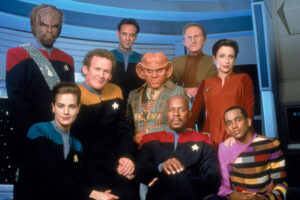
The 1989 sci-fi action film Cyborg starring martial artist Jean-Claude Van Damme may seem like a forgotten relic today, but it has a fascinating history behind it.
Originally, Cyborg was conceived as a sequel to the 1987 live-action Masters of the Universe film and also at one point was going to be a Spider-Man movie.
Cannon Films, the studio behind Masters of the Universe, had plans in the late 1980s to produce both a Masters sequel and a new Spider-Man film.
They came up with the idea to shoot the two films back-to-back, sharing some sets and actors.
Albert Pyun was set to direct both films, which had budgets around $4-6 million each, sizable for Cannon at the time.
The plan was to shoot for two weeks on the early life of Peter Parker scenes in Spider-Man, featuring the actor who would undergo training to beef up and eventually play Spider-Man.
Then the production would shift to the Masters sequel for six weeks, focusing on new He-Man actor Laird Hamilton. Finally, they would return to Spider-Man for the remaining shoot.
All of the sets and costumes were ready to go in Wilmington, North Carolina and studios like Marvel and Mattel had approved everything.
Just two weeks before filming, Cannon’s finances collapsed when checks to license the characters bounced.
Needing to improvise, Pyun came up with the idea for a new sci-fi film, Cyborg, that could incorporate the existing sets and costumes.
This would essentially sidestep the licensing issue and allow Cannon to recoup some of the $2 million they had already spent.
Van Damme was cast as the mercenary Gibson Rickenbacker, in the lead role originally written for Chuck Norris.
Pyun completed the script over a weekend, then had screenwriter Don Michael Paul polish it.
The new production, with Van Damme’s salary included, cost only $500,000. So Cannon was able to salvage something from the Spider-Man and Masters of the Universe debacle.
The Effects of Cannon’s Demise
With Cyborg, Cannon Films was able to wring one last viable production out of the resources already sunk into the aborted Spider-Man and Masters projects.
But their financial turmoil still marked the end for the famous “schlockmeister” studio. Cannon would only produce a handful more films before folding in the early 1990s.
Of course, Marvel’s Spider-Man rights would eventually end up at Sony Pictures after years in limbo, leading to the blockbuster Sam Raimi trilogy. But Cannon’s failure to get Spider-Man off the ground came down to the production excesses that doomed the company.
The frugal, low-budget formula that once made Cannon successful became their undoing as they spent big trying to compete with the major studios. Overreaching on risky projects like Spider-Man and Masters after years of success ultimately put Cannon on the path to bankruptcy.
Legacy of Cyborg
While it’s a footnote today, Cyborg did modestly well at the box office in 1989, taking in over $10 million. On a budget of just $500,000, it was a solid return.
The film has gone on to earn cult status, yet another example of a Cannon production finding life after initial commercial failure.
And Cyborg stands as a real curiosity in film history as a production born out of the ashes of two failed films. Jean-Claude Van Damme never did get to play Spider-Man or become part of the Masters of the Universe franchise. But the movie that emerged from the wreckage helped bolster his burgeoning career as an action star.










Leave a Reply